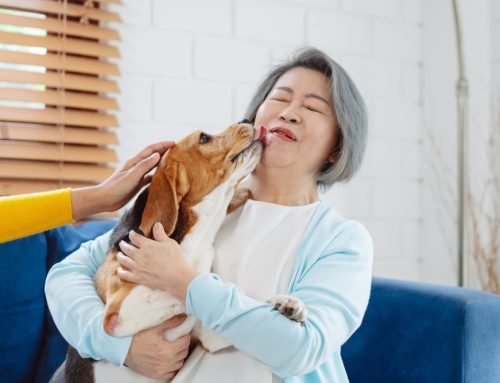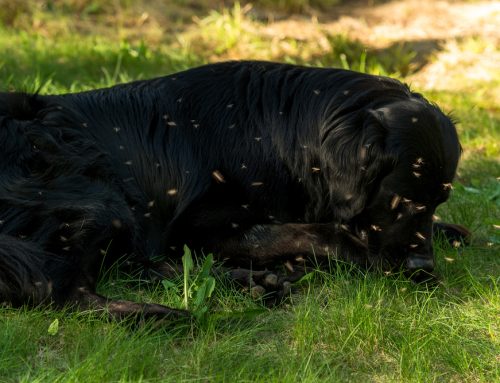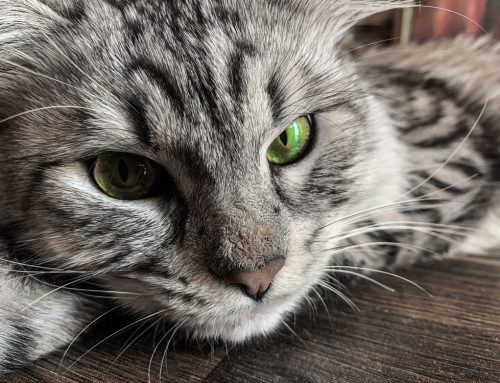Common Concerns about Dental Cleanings and Anesthesia
Many clients are aware that their pet requires dental cleaning and treatment, but shy away due to the fact that we must anesthetize their pets in order to provide appropriate dental care and perform safe and necessary procedures. While we understand that there are risks with anesthesia, we take all necessary steps to make it as safe as possible for your pets. We begin by performing a complete physical exam the day of the procedure to assure there are no obvious health problems, such as a heart murmur, pale gums, a fever, ets. We also offer pre-anesthetic blood screening to assure that your pet’s internal organs are working properly. We also require intravenous fluid therapy to maintain blood pressure, protect the kidneys and allow for smoother anesthetic recovery. Please discuss these features with any member of our staff. We will be happy to address your concerns and put your mind at ease.
But, my other doctor used to scrape the tartar off with his thumbnail. Why isn’t this ok? There are MANY reasons why this isn’t appropriate. While all you see is the heavy yellow tartar sticking to the teeth, the worst parts of dental disease are actually below the gum-line. Just because the tartar is gone, doesn’t mean the disease is any better. Under the gums, there may be infected pockets full of bacteria, weakened bone and teeth that need to be extracted. Most of this cannot be determined without a sedated/anesthetized exam, gingival probing and x-rays in some cases.
Here is the statement made by the American Veterinary Dental College (AVDC) in regards to cleaning the teeth without anesthesia. You can read more about the AVDC at www.AVDC.org.
Companion Animal Dental Scaling Without Anesthesia
In the United States and Canada, only licensed veterinarians can practice veterinary medicine. Veterinary medicine includes veterinary surgery, medicine and dentistry. Anyone providing dental services other than a licensed veterinarian, or a supervised and trained veterinary technician, is practicing veterinary medicine without a license and shall be subject to criminal charges.
This position statement addresses dental scaling procedures performed on pets without anesthesia, often by individuals untrained in veterinary dental techniques. Although the term “Anesthesia-Free Dentistry” has been used in this context, AVDC prefers to use the more accurate term Non-Professional Dental Scaling (NPDS) to describe this combination.
Owners of pets naturally are concerned when anesthesia is required for their pet. However, performing NPDS on an unanesthetized pet is inappropriate for the following reasons:
- 1. Dental tartar is firmly adhered to the surface of the teeth. Scaling to remove tartar is accomplished using ultrasonic and sonic power scalers, plus hand instruments that must have a sharp working edge to be used effectively. Even slight head movement by the patient could result in injury to the oral tissues of the patient, and the operator may be bitten when the patient reacts.
- Professional dental scaling includes scaling the surfaces of the teeth both above and below the gingival margin (gum line), followed by dental polishing. The most critical part of a dental scaling procedure is scaling the tooth surfaces that are within the gingival pocket (the subgingival space between the gum and the root), where periodontal disease is active. Because the patient cooperates, dental scaling of human teeth performed by a professional trained in the procedures can be completed successfully without anesthesia. However, access to the subgingival area of every tooth is impossible in an unanesthetized canine or feline patient. Removal of dental tartar on the visible surfaces of the teeth has little effect on a pet’s health, and provides a false sense of accomplishment. The effect is purely cosmetic.
- Inhalation anesthesia using a cuffed endotracheal tube provides three important advantages—the cooperation of the patient with a procedure it does not understand, elimination of pain resulting from examination and treatment of affected dental tissues during the procedure, and protection of the airway and lungs from accidental aspiration.
- A complete oral examination, which is an important part of a professional dental scaling procedure, is not possible in an unanesthetized patient. The surfaces of the teeth facing the tongue cannot be examined, and areas of disease and discomfort are likely to be missed.
Safe use of an anesthetic or sedative in a dog or cat requires evaluation of the general health and size of the patient to determine the appropriate drug and dose, and continual monitoring of the patient. Veterinarians are trained in all of these procedures. Prescribing or administering anesthetic or sedative drugs by a non-veterinarian can be very dangerous, and is illegal.
Although anesthesia will never be 100% risk-free, modern anesthetic and patient evaluation techniques used in veterinary hospitals minimize the risks, and millions of dental scaling procedures are safely performed each year in veterinary hospitals.
To minimize the need for professional dental scaling procedures and to maintain optimal oral health, the AVDC recommends daily dental home care from an early age. This should include brushing or use of other effective techniques to retard accumulation of dental plaque, such as dental diets and chew materials. This, combined with periodic examination of the patient by a veterinarian and with dental scaling under anesthesia when indicated, will optimize life-long oral health for dogs and cats.
For general information on performance of dental procedures on veterinary patients, please read the AVDC Position Statement on Veterinary Dental Healthcare Providers, which is available on the AVDC web site (www.AVDC.org). For information on effective oral hygiene products for dogs and cats, visit the Veterinary Oral Health Council web site (www.VOHC.org).







Leave A Comment